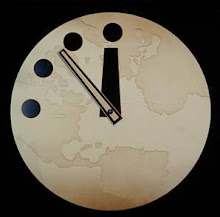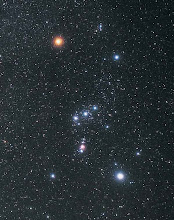The Creation of Fossils
Defeating Erosion
The creation of fossils is a question that is often ignored by the sciences. Finding them and applying an age to them is common. Yet, we fail to ask how was this made, especially, when the fossil is on the surface of this planet like the ancient foot prints found around rivers and streams. How can a foot print in the sand or muck withstand the flow of water?
We have all built sand castles and without noticing formed foot prints in the sand at beaches all around this planet. These structures and impressions have always been temporary. Even when the waves and tides don’t erase our marks on the earth; rain does, not to mention the effects of wind. None of us has left an everlasting signature. Erosion works!!
When it comes to bones and other organic material, placement in an oxygen free environment is required in order to leave an eternal impression. Now we have to find the right conditions that would facilitate fossilization.
The remains of an animal killed by a moving automobile will be picked apart by scavengers and any leftovers will rot and decompose into nothingness. Even bodies placed in caskets and vaults after embalming will decompose and return to mother earth. Eventually, even the vault and the casket will oxidize. The mummies that have been found are not examples of defeating oxidation - they are only proof that the process can be slowed down. This is proven by the fragile state of these mummies now located in museums all over the world. Upon exposure to the surface of the planet, they become susceptible to the very elements that those who performed the mummification were trying to avoid.
Even if mummification could stop oxidation, we would be even more perplexed by the thought that someone or something would have had to perform this process on thousands of bones that have been uncovered. I doubt that there was a society that disemboweled and/or embalmed dinosaurs, so that they would leave a legacy that lasted eons.
Other organics, such as leaves, grasses, and woods would also not survive ages to be found today. Decomposition happens. Today, we create compositing contraptions in our yards to deal with this type of debris. Nothing magical occurs in a compost pile. Many call it - rotting. Basically the material is oxidizing. As it breaks down, it turns into a material similar to dirt that we use in gardens and flower beds to feed nutrients to our beloved plants.
Just add oxygen to these organic materials and oxidation (rot, decomposition) will take place. That is why we periodically turn the material over with a shovel. Which means - if oxygen is present, the process will take place. Can anyone think of and defend a way in nature that oxygen can be totally removed from anything?
The sea, mud, and muck also do not totally remove oxygen from those items that will become fossils. After all, muck is the process in action. Materials gathered together and decomposing are the ingredients of muck.
Proof of this oxidation in a low oxygen environment is exampled by the USS Arizona in Honolulu Harbor. This memorial submerged in the water is oxidizing. It is slowly wasting away. While it is at a slower rate than it would be if it were above the water, it is still succumbing to the process. Mud and muck would probably make the change slow to a crawl; however, it would not stop.
So, how can the fact that the fossils exist be explained?
What process in nature could happen that would preserve any organic material long enough for debris to build up on top of it until the weight creates enough pressure to form a fossil?
One answer is volcanic ash cover. A complete burying of materials under this ash could explain the number of fossils found. Yet this causes one to wonder about the conditions required that would create global fossilization within the same strata layer. What would cause volcanoes to erupt all around the earth at the same time?
Another answer of the same type could be the covering of the bones by debris returning to the earth following a meteor impact. This would adequately accomplish the protection from oxygen. How many times has this event happened to the extent that would cover the entire globe and create the innumerable strata layers?
The only other answer can be found in any modern kitchen. It is simple - we rely on it most every day: Freezing. In our freezers, we find numerous examples of items that are defying oxidation. As long as a roast is frozen, it will remain and exist. The same would happen to any organic matter placed in the freezer. While freezer-burn may cause us to throw the roast away, it won’t allow the oxidation process to continue. If it’s frozen, organic matter will not oxidize. Plus, scavengers will not eat frozen meat.
If some organic item - say a dinosaur - becomes frozen and drops in its tracks, it will remain untouched by scavengers and defy oxidation. Subject to a continual frozen state - this same dinosaur will eventually be covered by all manner of materials through erosion deposits, space/sky dust accumulation, lava and the like. Over many years of this build up, the weight will increase. As the pressure builds from this weight, the process of fossilization begins.
Granted, as the pressure goes up, so will the temperature; however, by then the oxidation process has been slowed so much that fossilization takes place before the dinosaur bones rot away. Thus, a fossil exists for a future generations to find.
A flash freeze fossil creation method is really the only one that I think could protect foot prints in sand long enough to be made into fossils. The other methods would actually fill the prints and subsequently prevent their being found on the surface of the earth.
The explanation of how this freezing would take place will be addressed in another chapter. The global covering by volcanic ash will become obvious later, when events that would cause the vast amounts of lava to reach the surface will be discussed. The meteor impact theory is not covered herein because the event probably happened a few times throughout earth’s history; but, I doubt it happened once for every strata layer we have.
Fossil creation is an important piece of the puzzle. Their existence begs to be explained. The explanations cause greater questions. The questions lead to theories. The theories point to cataclysms. All of this warrants our attention.


